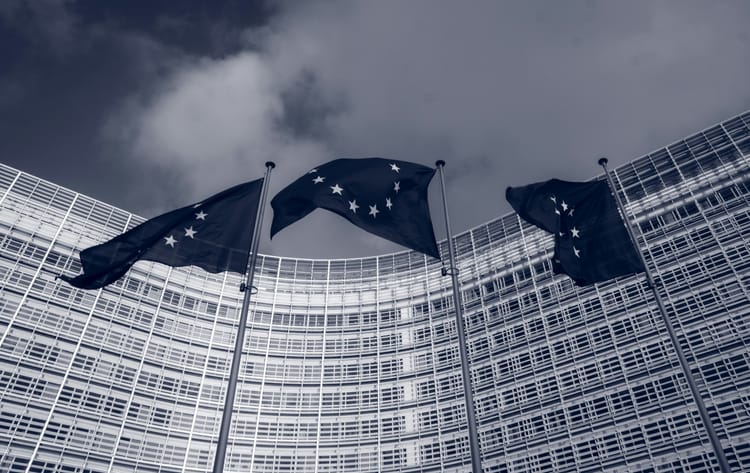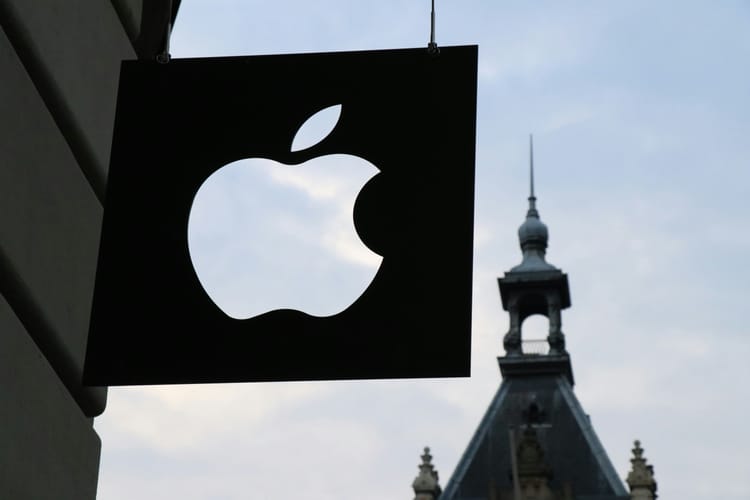Case study: What can CSOs learn from Apple’s sustainability communication?

CSO Futures dives into Apple sustainability plans and communication to find out what it got right – and wrong.
“This is my third corporate responsibility gig today, so who wants to disappoint me first?” When Octavia Spencer’s Mother Nature utters these words in a room full of Apple executives – including CEO Tim Cook and vice president of Environment, Policy and Social Initiatives Lisa Jackson – she conveys the exasperation felt by the millions of people around the world who are tired of waiting for companies to walk their climate talk.
But while Mother Nature leaves the meeting rather satisfied about Apple’s progress, the same can’t be said about public opinion, with the ad deemed “cringe” at best.
Apple ‘greenlighting’ in its sustainability communication
Overall, Apple’s sustainability-focused video was criticised for three main reasons. First, it focuses too much on what the company is doing right, without addressing the areas where it still needs to improve – a practice known as “greenlighting”. For example, the ad states that Apple is using 100% recycled aluminium in the enclosures of all MacBooks, Apple TVs and Apple Watches, but the company’s 2022 ESG Progress Report shows that recycled materials only make up 20% of Apple products on average. Instead of talking about its overall recycling strategy, the brand chose to highlight an isolated number that makes it sound like it has achieved more than it actually has.
Second, the ad was accused of exaggerating Apple sustainability ambitions. One of the most striking examples of that is the “carbon neutrality” claim mentioned repeatedly in the video. Apple has committed to being carbon neutral by 2030 – a target seen as much more flexible than the Science-Based Targets Initiative’s (SBTi) net zero framework.
For instance, the SBTi allows companies to use carbon credits to offset up to 10% of their emissions, with an obligation to eliminate the remaining 90% through carbon reduction techniques. Meanwhile, Apple plans to reduce emissions by 75% and offset the remaining 25% through “high-quality carbon offsets”. This could be one of the reasons why, when Mother Nature scoffs that “everybody says they’re planting trees”, Jackson replies: “We’re planting forests.”
This strong reliance on carbon offsets gives the impression that Apple is less ambitious than others when it comes to carbon reduction – and some research appears to confirm it. In the Road to Zero Emissions report by non-profit shareholder advocacy group As You Sow, Apple was graded ‘C’ in terms of greenhouse gas reductions, whereas its competitors Alphabet and Microsoft were both graded ‘A’.
Specifically, Apple lost points for using carbon credits without disclosing clearly how many tonnes of CO2 is offset this way, or from which particular projects the credits are issued. This information is actually available in the Environmental Progress Report (buried on pages 77-78): in 2022, Apple reported an overall carbon footprint of 20.6 million metric tonnes and offset about 1.5% of it – its corporate emissions – through carbon credits.
In contrast, Microsoft is currently using carbon credits to offset about 11% to 12% of its overall footprint, but it communicates transparently about its carbon removal programme and has committed to aligning its target with the SBTi.
Another reason for the downgrade was that its Scope 3 emissions intensity reduction did not reach the annual 7% expected under the SBTi’s 1.5ºC scenario – though the non-profit report was published before Apple’s aggressive drive to get suppliers to switch to renewable energy.
Apple still ranked in the report’s top five in terms of overall net zero grade, and most watchdogs agree that the company has taken ambitious steps to reduce its climate impact. But by appearing to overstate its achievements, Apple may be losing some credibility.
In reaction to the unveiling of a range of Apple watches under a “carbon-neutral” label, NewClimate Institute’s Thomas Day and Reena Skribbe wrote: “Apple’s carbon neutrality claims create an unnecessarily misleading exaggeration of the company’s ambition. Without the misleading marketing, Apple could stand out as a role model for several aspects of its climate plan, but there remain also significant areas of potential improvement.”
Right to repair left out of Apple sustainability communication
Finally, Apple received criticism for not addressing the elephant in the room: the vast amounts of electronic waste generated by its products. Overall, the world produces close to 55 million tonnes of e-waste annually. This number is expected to double by 2050, and as of 2020, only 17% of it was recycled.
Considering that Apple is regularly accused of ‘planned obsolescence’, not addressing this problem in its sustainability communication puts the company at a much higher risk of being accused of greenwashing – and gives competitors a golden argument.
In its response to the Mother Nature ad, Fairphone, a smartphone manufacturer committed to creating positive environmental and social impact through its supply chain, said: “Carbon neutrality through offsets is a band-aid, not a solution. Mother Nature deserves better. And it's as simple as consuming less.” It also rewrote the video’s script, getting Apple CEO Cook to say “buy less stuff” and talk about phones “lasting a decade”, with Mother Nature responding: “Kind of like Fairphone does?”
Apple’s ESG Progress Report emphasises the brand’s progress in making its products easier to repair, and indeed, the company launched a ‘Self Service Repair’ service in 2022, “providing individuals with access to repair manuals and genuine Apple parts and tools through the Apple Self Service Repair Store” in the US and Europe.
The new service helps customers “who are experienced with the complexities of repairing electronics” guidance for 45 types of repairs to be performed on “certain iPhone models, MacBook and Mac computers”, as well as displays.
But while Apple’s repairability initiatives have been generally welcomed by customers, the tech community has slammed the company for maintaining complete control over the process and even threatening the business models of repair shops. “Most major repairs on modern iPhones require Apple approval. You have to buy parts through their system, then have the repair validated via a chat system. Otherwise, you’ll run into limited or missing functionality, with a side of annoying warnings,” said an iFixit article explaining why it retroactively downgraded the iPhone’s repairability score.
By using its flashy sustainability ad to emphasise new “carbon-neutral” products, and not putting enough effort into customers’ right to repair, Apple made itself the target of greenwashing accusations.
“This week Apple have raised the bar for the scale and depth of corporate greenwashing. Let’s hope other companies don’t follow their path,” said digital sustainability activist Mark Butcher in a Linkedin post accusing the brand of “using sustainability for revenue growth”.
The carbon neutrality of the new Apple watches itself was put into question by NewClimate Institute: “Apple describes some promising measures it has taken to reduce the emission footprint of these products, including the partial use of recycled materials and a moderate reduction in emissions-intensive air transportation. This is a good step, but it is a bold exaggeration to imply that these products have a neutral impact on the climate.”
What Apple got right in its sustainability communication
Despite these faux pas, Apple’s Mother Nature ad was deemed effective by some, at least in addressing criticism about its climate ambition. But it also succeeded in creating a buzz, raising the bar for other large corporations to talk (loudly) about their sustainability efforts.
“In terms of raising the topic, in terms of business response to sustainability, fantastic. Most ESG reports are hidden off a footer on a website or a corporate report, and they're like, a decent PDF, but it doesn't go much further. This was a really proud version of that. And I think it will have heckled other people into the level of their ambition (...) provoking people into more meaningful action,” Maddy Cooper, Founder and CEO of sustainable branding agency Flourish, told CSO Futures.
However, she added that there are two crucial things Apple should do differently next time. The first is to talk about their efforts to increase the durability and repairability of its products. As for the second recommendation, Cooper said: “It shouldn't be an ESG report. It should be with the same calibre and production value, but it should be positioned as their business strategy report, articulating how they are orienting the business strategy to be all about driving a better world for our planet, people and Apple's profits, but in that order.”







Member discussion